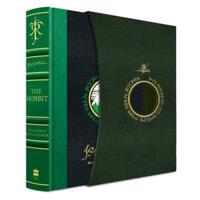Publisher's Synopsis
Maurice Marie Emile Leblanc (11 November 1864 - 6 November 1941) was a French novelist and writer of short stories, known primarily as the creator of the fictional gentleman thief and detective Arsène Lupin, often described as a French counterpart to Arthur Conan Doyle's creation Sherlock Holmes. Biography: Leblanc was born in Rouen, Normandy, where he was educated at Lycée Pierre-Corneille. After studying in several countries and dropping out of law school, he settled in Paris and began to write fiction, both short crime stories and longer novels. The latter, heavily influenced by writers like Gustave Flaubert and Guy de Maupassant, were critically admired but had little commercial success. Leblanc was largely considered little more than a writer of short stories for various French periodicals until the first Arsène Lupin story appeared in a series of short stories that was serialized in the magazine Je sais tout, starting in No. 6, dated 15 July 1905. Clearly created at editorial request under the influence of and in reaction to the wildly successful Sherlock Holmes stories, the roguish and glamorous Lupin was a surprise success and Leblanc's fame and fortune beckoned. In total, Leblanc went on to write 21 Lupin novels or collections of short stories. The character of Lupin might have been based by Leblanc on French anarchist Marius Jacob, whose trial made headlines in March 1905. It is also possible that Leblanc had also read Octave Mirbeau's Les 21 jours d'un neurasthénique (1901), which features a gentleman thief named Arthur Lebeau, and he had seen Mirbeau's comedy Scrupules (1902), whose main character is a gentleman thief. It was not influenced by E. W. Hornung's gentleman thief, A.J. Raffles, created in 1899, whom Leblanc had not read.By 1907, Leblanc had graduated to writing full-length Lupin novels, and the reviews and sales were so good that Leblanc effectively dedicated the rest of his career to working on the Lupin stories. Like Conan Doyle, who often appeared embarrassed or hindered by the success of Sherlock Holmes and seemed to regard his success in the field of crime fiction as a detraction from his more "respectable" literary ambitions, Leblanc also appeared to have resented Lupin's success. Several times, he tried to create other characters, such as private eye Jim Barnett, but he eventually merged them with Lupin. He continued to pen Lupin tales well into the 1930s. Leblanc also wrote two notable science fiction novels: Les Trois Yeux (1919), in which a scientist makes televisual contact with three-eyed Venusians, and Le Formidable Evènement (1920), in which an earthquake creates a new landmass between England and France. Leblanc was awarded the Légion d'Honneur for his services to literature, and died in Perpignan in 1941. He was buried in the Montparnasse Cemetery. Georgette Leblanc was his sister............................. Alexander Louis Teixeira de Mattos San Payo y Mendes (April 9, 1865 - December 5, 1921), known as Alexander Teixeira de Mattos, was a Dutch-English journalist, literary critic and publisher, who gained his greatest fame as a translator. Early life: The Teixeira de Mattos Sampaio e Mendes family was of Portuguese Jewish origin, having been driven out of Portugal to the Netherlands by Holy Office persecution. Alexander Teixeira de Mattos was born as a Dutch Protestant to an English mother and a Dutch father, inheriting the Dutch title of Jonkheer. In 1874, when he was nine years old, he and his family moved from Amsterdam to England.There, he studied under Monsignor Thomas John Capel and converted to Roman Catholicism. He then studied at the Kensington Catholic Public School and at the Jesuit school Beaumont College.................








